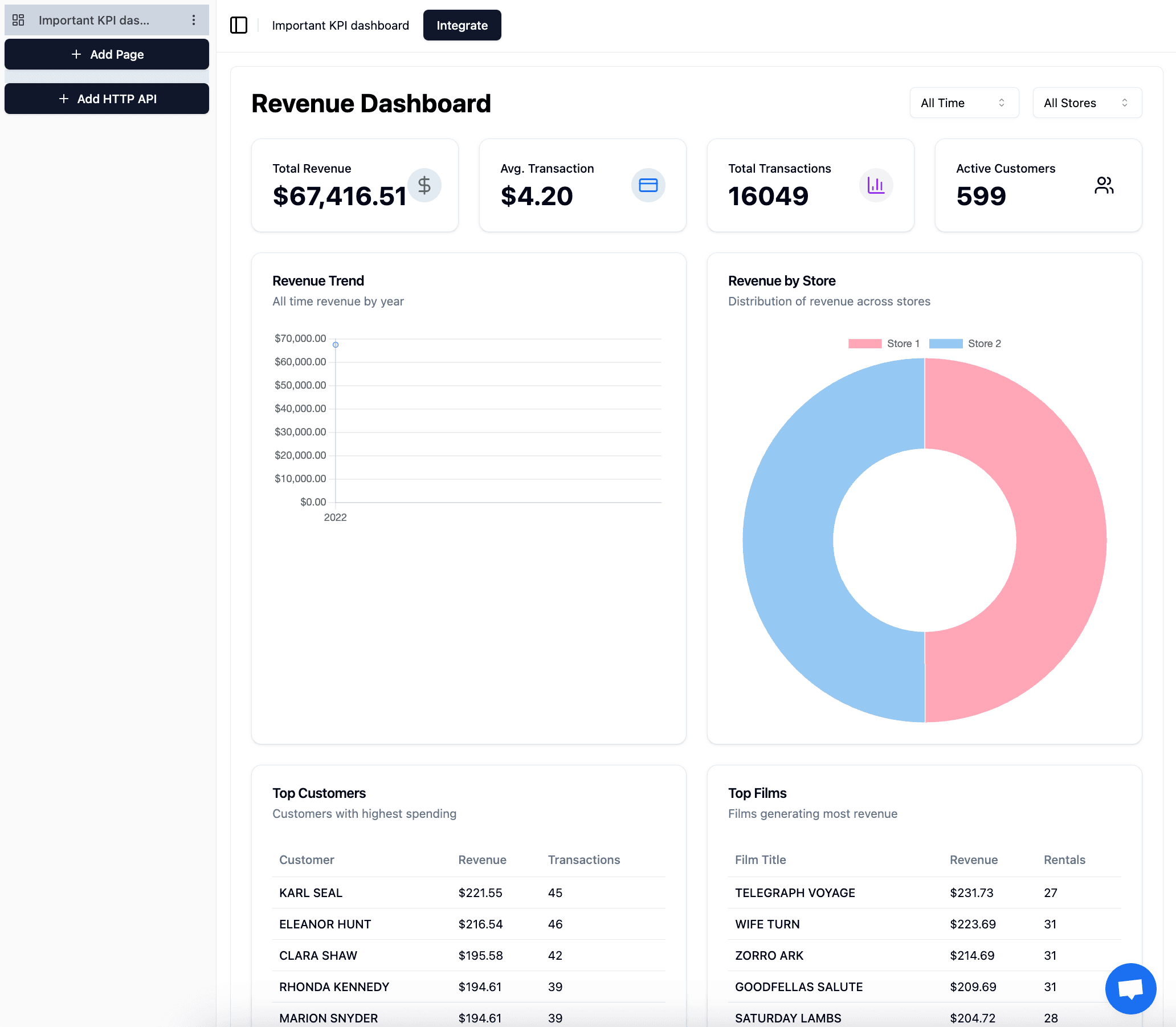Dashboard Builder
In this tutorial, we will show you how to use AskYourDatabase Dashboard Builder to create real-time, interactive dashboards using natural language.
You can use pure natural language to create live dashboards like this:

Key Features
1. Natural Language Interface
- Build dashboards by describing what you want in plain English
- No SQL or complex query language required
- AI-powered translation of natural language to database queries
2. Real-time Data Operations
- Create, read, update and delete (CRUD) operations on your data
- Real-time connection to your database
3. Rich Components
- Tables with sorting, filtering and pagination
- Charts and graphs (line, bar, pie, etc.)
- Forms for data input
- Custom metrics and KPIs
Creating Your First Dashboard
Navigate to Dashboard Builder
Access the Dashboard Builder through your AskYourDatabase account by clicking "Dashboard" in the main navigation.
Create New Datasource
Go to Datasource and click "Create new datasource".

For better AI understanding of your database, it's highly recommended to add appropriate database documentation, including:
- KPI definitions and calculations
- Business meaning of tables and columns
- Relationships between different tables
- Common metrics and their business context
- Any special data handling requirements
This documentation helps the AI generate more accurate and meaningful dashboards that align with your business needs.
Build Your Dashboard
Go to Dashboard and click "Create new dashboard".
Within each dashboard, you can create multiple tabs. Each tab is a separate page that you can customize independently.
Click "Create new page" to add a new tab.

You should describe what you want to see in natural language. It's better to have a clear idea of what you want to visualize.
The AI will generate the dashboard based on your database structure and description.
You can modify it later, and all previous versions will be saved.
For the example above, here is what we got:

As you can see, the AI generates the dashboard based on your description.
Share and Integrate
- Share with team members via direct link
- Embed in your website using iframe code, see the tutorial here: Embed Dashboard
- Set up access permissions
- Monitor usage analytics
Best Practices
- Start with clear objectives for your dashboard
Security Considerations
To prevent AI from generating incorrect SQL queries, we recommend:
- First build and validate your dashboard using a staging database with the same schema as production
- Once verified that all queries work correctly, switch the connection to your production database
- This allows you to safely test and refine the dashboard without risking production data
This approach ensures:
- SQL queries are validated before running on production
- No unexpected behavior in production environment
- Safe testing of dashboard functionality
For more details about security, please refer to our Security Portal.